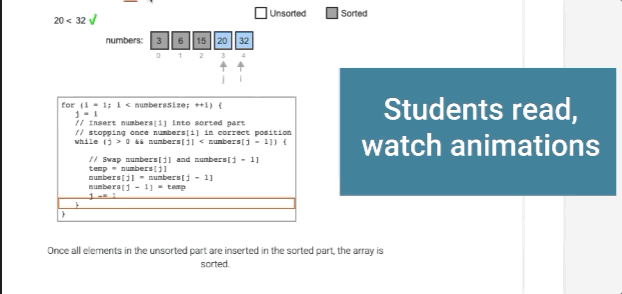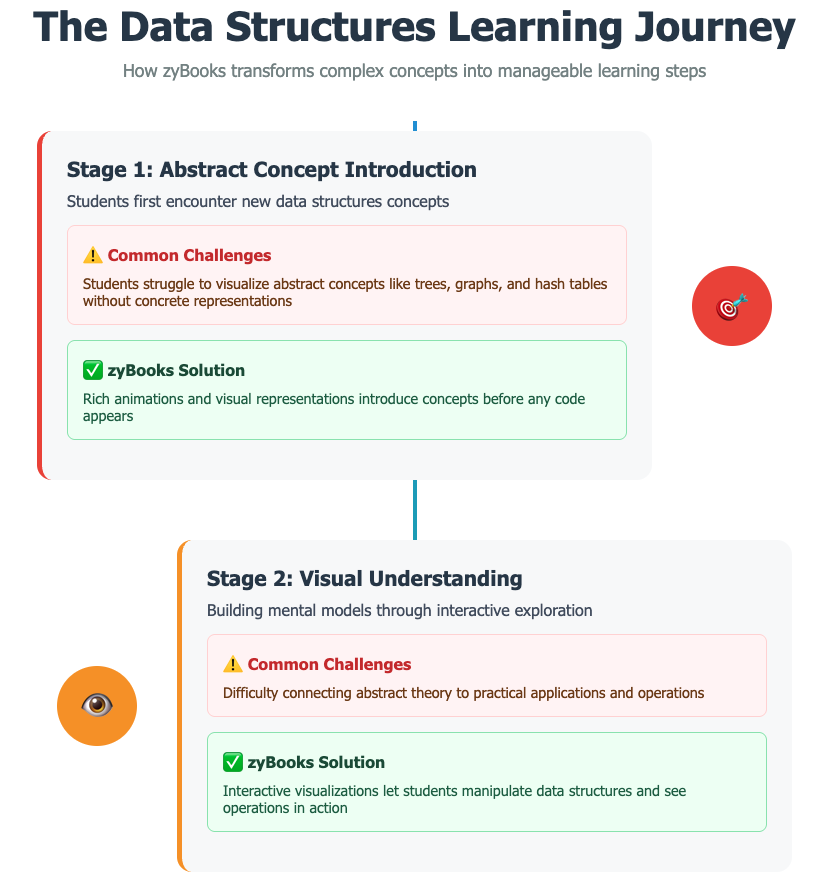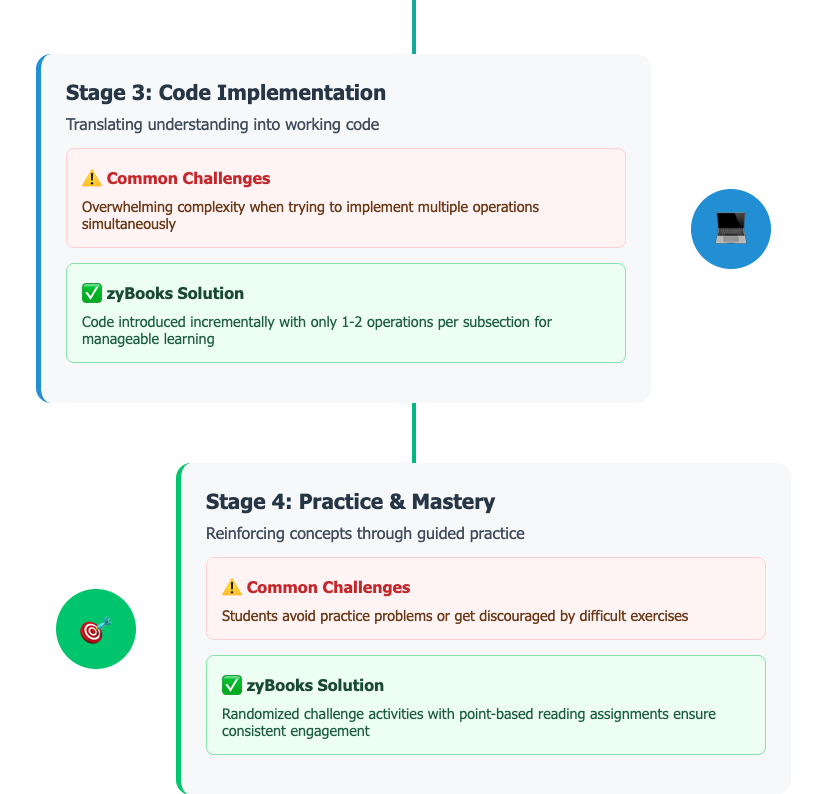Why Students Drop Data Structures – And How to Stop It
zyBooks Retention Guide
Data structures courses represent a critical juncture in computer science education, where theoretical concepts meet practical implementation in ways that can either propel students forward or leave them struggling to keep up. As department chairs and professors, you’ve likely observed that even students who excelled in introductory programming courses can face unexpected challenges when tackling data structures. Understanding these challenges and implementing effective teaching strategies can significantly improve student retention and success in this foundational course.
The Retention Challenge in Data Structures
Data structures courses often require students to learn and integrate multiple concepts simultaneously. Not only must students learn new data structures and algorithms, but they must also implement those structures and algorithms in a programming language. Even students who do well in prerequisite programming courses are by no means “programming experts” by the time they take a data structures course. Mathematical prerequisites are similar in the sense that students with a solid mathematical foundation may still struggle with topics like time complexity analysis. These and other challenges often lead to poor retention in data structures courses.
The complexity of data structures education stems from its interdisciplinary nature. Students must seamlessly integrate abstract mathematical thinking with concrete programming skills, all while developing intuition about algorithm efficiency and design trade-offs. This cognitive load can overwhelm even well-prepared students, leading to frustration and, ultimately, course withdrawal.
A Visual, Incremental Approach to Learning
Our Data Structures zyBooks attempt to address many of the challenges of teaching data structures. For example, our zyBooks are highly visual and teach data structures concepts with animations before introducing any code. Once the student is familiar with concepts, our zyBooks then show code implementations for operations, usually with only one or two operations per subsection. This allows students to learn all the necessary pieces in small, manageable chunks.

This pedagogical approach recognizes that students need time to develop mental models of abstract data structures before diving into implementation details. By separating conceptual understanding from coding implementation, students can focus on one cognitive challenge at a time, building confidence and competence progressively.
Effective Implementation Strategies
To maximize the impact of your Data Structures zyBook and improve student retention, consider these evidence-based strategies:
1. Assign reading for points.
Each zyBook supports reading assignments, and each section has tracked activity completion that can be used for awarding points. Such assignments make sure that students read the material and stay on track throughout a quarter/semester. This accountability mechanism prevents students from falling behind, which is often the first step toward course withdrawal.
2. Leave much of the book’s ordering unchanged.
zyBooks allow sections and chapters to be reordered in any way, and we encourage instructors to reorder as needed to adapt the zyBook for their course. But many data structures concepts build on top of each other, making excessive reordering risky. For example, early chapters like “Searching and Algorithm Analysis” lay the foundation for the algorithm analysis that is used throughout the remaining chapters. Maintaining this carefully designed progression helps students build knowledge systematically.
3. Demo completion of challenge activities during lectures.
Our Data Structures zyBooks include challenge activities (CAs) with randomized content. Because problems are randomized, instructors can demonstrate solving the CAs in class without worry that an answer has been “given away” in the process. When a student performs a reading assignment and arrives at a CA shown in class, the randomization is likely to produce a different variant of the problem. This approach allows students to see problem-solving strategies in action while maintaining the integrity of their individual practice.


Building Student Success Through Strategic Support
Improving retention in data structures courses requires more than just good materials—it demands a comprehensive approach that acknowledges the unique challenges students face. By implementing structured reading assignments, maintaining logical content progression, and demonstrating problem-solving techniques through randomized activities, instructors can create an environment where more students succeed.
The key to retention lies in preventing students from becoming overwhelmed by the course’s complexity. When students can build understanding incrementally, with adequate support and clear expectations, they’re more likely to persist through difficult concepts and emerge with the skills needed for advanced computer science coursework. Your investment in effective data structures pedagogy pays dividends not only in improved retention rates but in better-prepared students who carry strong foundational knowledge into subsequent courses.
Review our zyBooks data structures titles to learn more about our content and platform. Follow us on LinkedIn to stay informed about updates and new tools.





